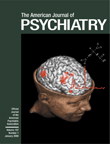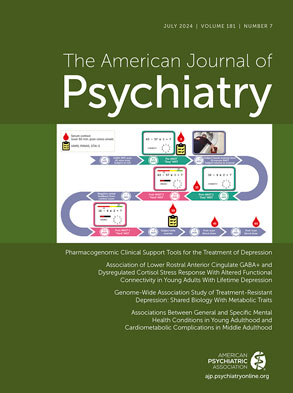Models of the nature of brain dysfunction in major psychiatric disorders have evolved substantially over the past several decades in parallel with (if lagging somewhat behind) the progression in knowledge resulting from investigations of the biological mechanisms that contribute to normal cognition, emotion, and behavior. Previous models of psychopathology frequently emphasized, in their simplest forms, the central contribution of either 1) excesses or deficits in the amount of a given neurotransmitter (in some cases, these models bore more than a superficial resemblance to historical beliefs that altered levels of the four classical bodily humors produced different forms of madness) or 2) a localized disturbance in the structure of a single brain region (an approach that, in extreme cases, could be considered a twentieth-century variant of phrenology). These ideas have given way to a fuller appreciation of the fact that neurotransmitters act in an anatomically constrained fashion to produce specific biochemical effects at the cellular level and the fact that the localization of function(s) is a consequence of the flow of information processing through the neural circuits within a given brain region and those linking that region to other brain areas. Indeed, Braff
(1) has observed that the newer literature (see references
2–
4 for examples) reflects a movement from “one neurotransmitter, one locus” models of psychopathology to formulations that “invoke wide-ranging anatomical sites of dysfunction with accompanying abnormal connectivity.” These latter types of models incorporate the recognition that complex brain functions, such as those that are disturbed in major psychiatric disorders, are subserved by the integrated activity of distributed ensembles of neurons.
Three studies of schizophrenia reported in this issue of the
Journal provide illustrations of the relations between empirical studies and these newer models of pathophysiology. Vogeley and colleagues report that the gyrification index, a measure of the degree of cortical folding, is significantly higher than normal, by an average of 7%, in the right prefrontal cortex of male subjects with schizophrenia. McDonald et al. describe 10%–13% lower than normal mean volumes of the left hippocampal and fusiform gyri of the temporal lobe, and an associated reversal of the normal left-greater-than-right volume asymmetry of these brain regions, in subjects with schizophrenia. These findings are of interest for several reasons. First, they converge with, and extend, the results of previous studies demonstrating modest volumetric abnormalities in the prefrontal and medial temporal lobes of subjects with schizophrenia (see references
5 and
6 for reviews). Second, the nature of the reported findings point to possible mechanisms as to how these abnormalities arise. However, these studies also raise the questions of how such abnormalities in different brain regions are related to each other and how they actually contribute to the clinical phenomena of schizophrenia.
In the third study, Bertolino and associates used a novel approach to address these types of questions. These investigators combined spectroscopic magnetic resonance imaging of
N-acetylaspartate, a surrogate marker of neuronal integrity, with PET images obtained while subjects performed tasks that tap working memory. Their results confirm that working memory tasks require the activation of a neuronal network distributed across a number of cortical and subcortical structures
(7,
8). More important, their findings suggest that the function of the network can be disrupted by a disturbance in neuronal integrity (e.g., decreased
N-acetylaspartate levels) that appears to be restricted to one node of the network, in this case the dorsolateral prefrontal cortex. However, the authors carefully point out that abnormal
N-acetylaspartate levels could reflect focal pathological changes either of neurons intrinsic to the prefrontal cortex or of afferent inputs from the thalamus, medial temporal lobe, or other brain region. Indeed, these options are not mutually exclusive, and an either/or scenario actually seems unlikely. By virtue of the interconnections among nodes, it would be surprising if a disturbance in one region did not produce a series of alterations throughout the network, ranging from shifts in gene expression to larger-scale structural changes. In terms of the Bertolino et al. study, it may be that disturbances in multiple projection streams crossed the threshold of detectability in the prefrontal cortex, only by virtue of their confluence in that brain region.
Given the probability that distributed network models of brain dysfunction in schizophrenia (and other psychiatric disorders) will continue to improve our ability to account for clinical observations, a critical next step will involve disentangling the relations among the abnormalities observed in different brain areas. Specifically, understanding the pathophysiology of a given disorder will ultimately require an appreciation of how abnormalities in one brain region produce and/or result from disturbances in other brain areas, a task that involves a consideration of the “three Cs”: cause, consequence, and compensation. Does a given abnormality represent the primary brain disturbance (cause), does it reflect a downstream or upstream (given the reciprocal nature of many links between brain regions), secondary, deleterious event (consequence), or does it reveal a homeostatic response designed to restore (at least partially) normal brain function (compensation)? Distinguishing among these three possibilities for each component of a neural network will be essential in a number of respects, including the development of novel therapies designed to correct causes and consequences and/or to augment compensatory responses.

